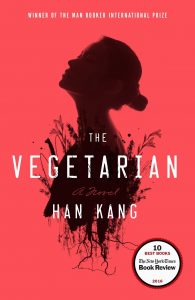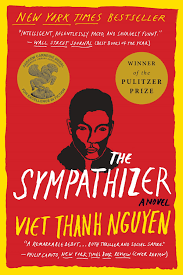Back in the early aughts, I worked, for a bit, at a national bookstore chain. I mostly slopped together drinks, steaming lattes and steeping teas in the cafe, but every once in a while, I helped out on the floor, stacking books on tables according to very specific corporately-determined layouts. I took a lot of breaks, though I’d always purport to be working—shelving and what not—and I’d spend most of my self-granted down time either in the “Horror” section or the “Fiction” section. The “Horror” shelves contained mostly thick, squat mass-markets with covers sporting silhouettes surrounded by overdrawn hellscapes, while the “Fiction” shelves held a wide assortment of covers and book sizes. A certain seriousness emanated from the “Fiction” stacks: these books, their covers proclaimed, demanded more rigorous contemplation, more effort and thought and diligence. The books on the genre shelves were for escapist rubes, they said. We’re clearly the smart ones in the room.
Time passed. I quit my job. I became a writer. I wrote some horror. I wrote some other things. And as I wrote, I kept thinking of that classification system, how very strange it was. As an avid reader of books on both shelves, I’d noticed, over time, that many of the books were interchangeable, shelf-wise anyway. A lot of the books on the horror shelves were just as, if not more, provocative than those on the general fiction shelves, and a lot of the books on the general fiction shelves could’ve easily been classified as horror. So in that spirit, I’ve compiled a list of six books that are widely classified as literary but could have easily made their way over to the horror shelf.

Zombie by Joyce Carol Oates
I mean, this book is straight-up horror. I wouldn’t even put it in that nebulous category of “literary horror”, but just, you know: this his horror. It’s about a psychopath who wants to perform ice-pick lobotomies on people so he can have sex with them. Yeah. Beyond grisly. The book even has pictures, one of which shows a head with an ice pick jammed into its brain. Joyce Carol Oates, though, mostly writes more subdued (but still very dark!) novels, and she’s by and large considered a literary luminary, so I don’t ever see any of her books making that trip over to the horror section (which, by the way, no longer exists in most bookstores).

The Vegetarian by Han Kang
This novel is brutal and terrifying. The main character, Young-Hye is victimized in all sorts of ways by the men in her life, and the depictions of these brutalities are harrowing and explicit. For example, after Young-Hye announces that she no longer eats meat, her father, in a fit of rage, attempts to force feed her pork, only for Young-Hye to turn on her family with a knife, which she eventually uses on her own wrists. Throughout the book, we watch as Young-Hye performs increasingly bizarre behaviors, and by the end of it, you’re left feeling breathlessly traumatized. Unrelenting, disturbing, gorgeous, and macabre: really good horror.

Leave the World Behind by Rumaan Alam
The genius of this book is what’s not on the page. A catastrophic end-times event is happening, and the characters, because they lack any sort of contact to a world outside of a remote part of Long Island, are oblivious to what it is. Anxiety builds, and the more fearful the characters get, the more uneasy I became. Nothing feels unearned here—the dread is palpable but Alam takes care not to cheapen anything through gratuitously violent imagery. Instead, he allows for the setting to slowly transform from an idyllic vacation place to a suffocating emotional prison. I loved it.

The Sympathizer by Viet Thanh Nguyen
Most people wouldn’t categorize this novel as horror, but really, any frank and brutal depiction of war can and should be categorized as such. What, exactly, is more horrific than mass slaughter dictated and encouraged by idealogue politicians who publicly feign compassion while ordering more of their own youth to kill and be killed? In war, the monster isn’t a vampire or werewolf or disfigured clown, it’s not a singular knife-wielding shadow lurking outside in the woods—no, it’s more horrifying than that. In war, the monster is the invisible force of murderous dogma, the tenets of which always lead to evisceration of some sort. So yeah: This book is rollicking, smart, and often funny, but it’s also terrifying. Its explicit depictions of murder and torture, especially in its last third, have been seared into my brain, and those images have stayed with me for a very long time.

A Questionable Shape by Bennett Sims
This is a story about zombies, but it’s so much more than that. It’s a meditation on memory, love, loss. Sims takes such care with his words. Every sentence is a bit of a heartbreak. For example, this line: On our hike, she kept stopping to admire the sun’s suffusion in the air, pointing out the way that it punched through the pine branches in great gold shafts, so like the conical tractor beams of hovering UFOs that all those backlit motes of dust, which were in face being circulated in every direction, seemed to float only upward, in abducted currents. The whole book is like this. There are so many ruminations, from video games to Wittgenstein, that the zombie apocalypse simply seeps into the book’s incantatory fabric. It’s a novel that makes me want to become a better writer.

Blindness by Jose Saramago
After over a year of Covid, reading a book about people quarantined in a psychiatric hospital because of an epidemic of blindness might be a bit too unsettling for some. And this book is unrelenting in its violence and treachery, showing us what people are willing to do to stay alive under the most dire and destitute of circumstances. It reveals the darkness hidden beneath seemingly agreeable veneers, and uncovers the often twisted selves that emerge when faced with an unconquerable beast, but it also illustrates the triumphs of the human spirit and imagination, and if you can get past all the awful, awful terror, you might leave it feeling a bit more hopeful.
***


















